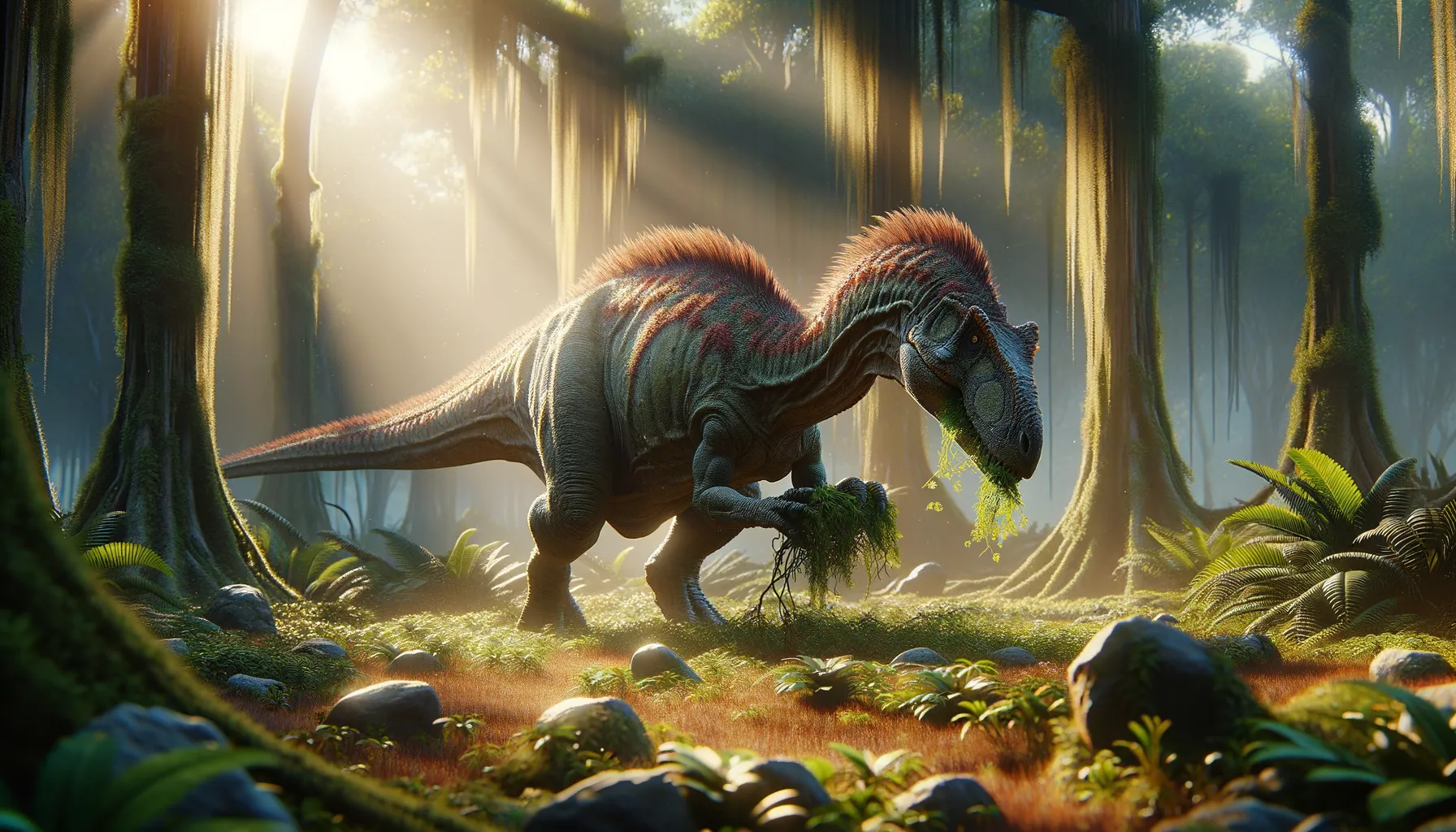
Jinzhousaurus
Ancient forager of the lush Cretaceous landscapes.
Period
Cretaceous
Length
Around 5 to 6 meters in length from head to tail.
Height
Stood approximately 2 meters tall at the hips.
Weight
Estimated to weigh about 500 to 800 kilograms.
Jinzhousaurus was a herbivorous dinosaur, part of the iguanodontian suborder, which roamed the earth during the early Cretaceous period. Discovered in what is now China, its fossil remains have provided valuable insights into the evolutionary lineage of ornithopod dinosaurs. Distinguished by its plant-eating adaptations, the Jinzhousaurus had a body structure conducive to a life of slow foraging, hinting at a lifestyle centered around browsing low vegetation.
Diet
Jinzhousaurus was a herbivore, primarily feeding on a variety of plant material. Its diet likely included conifers, cycads, and early flowering plants, which were abundant during the Cretaceous period. With specialized teeth and jaw structures, it was well-equipped to handle tough, fibrous vegetation.
Hunting
As a herbivore, Jinzhousaurus did not engage in hunting. It spent much of its time grazing and foraging on available plant resources. Its lifestyle revolved around avoiding predators rather than pursuing prey.
Environmental challenges
Jinzhousaurus lived in a period marked by dynamic environmental conditions, including the emergence of flowering plants. It had to adapt to fluctuating temperatures and the shifting availability of vegetation across seasons. Competition for food sources with other herbivorous dinosaurs was likely a pressing challenge, requiring efficient foraging strategies.
Speed
Jinzhousaurus was relatively slow, moving at walking speeds to browse plants.
Lifespan
Estimated around 20 to 30 years based on size and bone structure.
First discovery
First discovered in 1997 in the Yixian Formation in China.
Fun Facts
- Jinzhousaurus lived about 125 million years ago during the early Cretaceous period.
- This dinosaur was discovered in the Liaoning Province of China, a region famous for its well-preserved fossils.
- Jinzhousaurus was a herbivore, dining primarily on plants with its beak-like mouth.
- It was a relatively small dinosaur, estimated to be about 5 meters long, similar in size to a cow.
- Jinzhousaurus had a long neck and tail, which helped it balance as it moved.
- It is part of the iguanodontian group, which includes other famous dinosaurs like Iguanodon.
- The name Jinzhousaurus means 'Jinzhou lizard,' named after the city near where it was found.
Growth and Development
Jinzhousaurus hatched from eggs and would have undergone significant growth to reach its adult size. Like many iguanodontians, it likely experienced rapid growth rates during the early stages of life. The development included adaptations for efficient plant processing and enhanced mobility for foraging.
Habitat
Jinzhousaurus inhabited lush, forested environments rich in vegetation. These areas provided ample food resources and shelter from predators. Favorable climates allowed for thriving plant biodiversity, attracting a wide range of herbivorous dinosaurs. The availability of water sources in its habitat was crucial for its survival.
Interaction with other species
Jinzhousaurus co-existed with a variety of other dinosaur species, sharing resources and habitat spaces. It likely formed mixed herds with other herbivores to enhance protection against predators. Interactions with predators could have mainly involved avoidance strategies or relying on herd dynamics for safety.
Natural lifespan
Jinzhousaurus likely lived for up to 30 years, assuming it avoided predators and disease.
Reproduction
Jinzhousaurus reproduced by laying eggs, and nesting grounds were likely communal to increase survival rates. Parental care might have been involved during the early stages of growth, as suggested by evidence in related species. Nesting in safe, concealed areas would have been essential to protect the eggs from predators.
Social behaviour
Jinzhousaurus likely lived in herds, which provided safety in numbers against predators. Social structures within the herd could have included dominant and subordinate individuals. Herd living also facilitated cooperative foraging and increased vigilance for threats in their environment.
Fossil locations
The primary fossils of Jinzhousaurus have been discovered in China's Yixian Formation in the Liaoning Province. These sites are renowned for well-preserved dinosaur remains, offering insights into prehistoric biodiversity. Ongoing excavations continue to yield additional fossils, enhancing our understanding of its ecological role.
